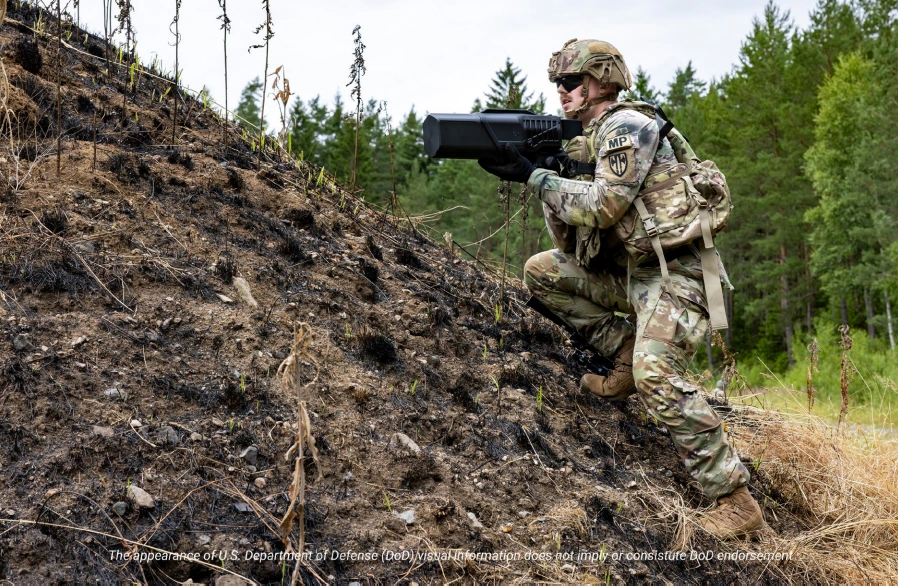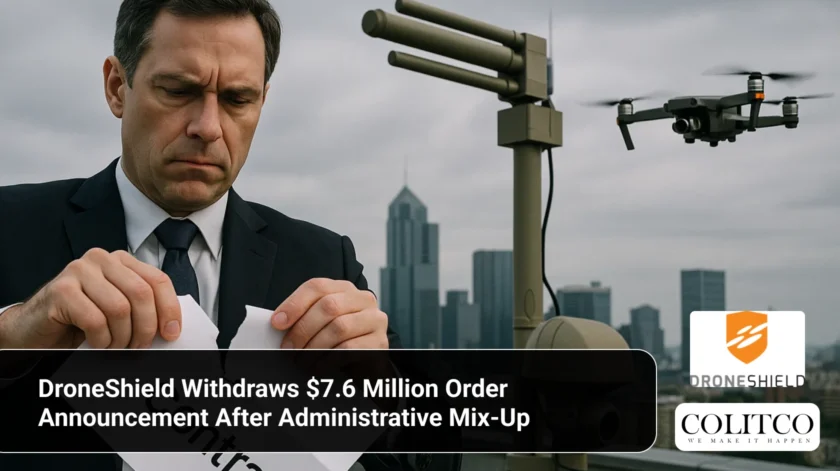DroneShield Limited (ASX: DRO) had to take the unusual step of withdrawing a market announcement on the same day it was released, revealing that what appeared to be a $7.6 million contract win was actually an administrative error involving reissued paperwork.
The Sydney-based counter-drone technology company announced on 10 November 2025 that it had secured three new contracts worth $7.6 million from the US Government. Hours later, the company issued a second announcement pulling back those claims entirely.
The November contracts did not represent new business. They were orders previously issued to DroneShield earlier in 2025 that the customer had reissued due to regulatory updates.
One of these contracts had already been announced to the market on 17 September 2025.
What Went Wrong
DroneShield’s internal systems failed to flag that the contracts were administrative reissues rather than fresh orders.
The company’s withdrawal statement was direct: “The November Contracts were inadvertently marked as new contracts rather than revised contracts due to an administrative error.”
DroneShield stated it is implementing measures to prevent similar mistakes in future announcements.
The error highlights the challenges defence contractors face when managing multiple contract variations and regulatory paperwork from government clients.
Context: September’s Legitimate Announcement
The September announcement DroneShield referenced was genuine. On 17 September 2025, the company announced $7.9 million in new orders from the US Department of Defense.
That announcement marked a milestone, with DroneShield surpassing 4,000 systems sold worldwide.
CEO Oleg Vornik commented at the time on rising customer demand: “As our customers seek to step up from their early small-scale evaluation purchases into full scale procurement, we are seeing rapidly rising customer demand.”
The September contracts were legitimate and part of DroneShield’s record Q3 2025 performance, which saw revenue hit $92.9 million.

Initial Market Reaction
Before the withdrawal, the original announcement briefly boosted investor sentiment. The stock had opened higher following the news.
DroneShield shares closed at $3.22 on 7 November 2025, within a 52-week range of $0.585 to $6.71.
The counter-drone specialist has experienced volatility in recent months despite strong operational performance. The stock has fallen approximately 40% over the past month, even as the company reports accelerating order flow.
Bell Potter Securities maintains a buy rating with a $5.30 price target, implying potential upside of 65% from current levels.
Record Year Despite the Stumble
The administrative error occurred during what has otherwise been DroneShield’s strongest year on record.
Year-to-date committed revenues stand at $193.1 million, already eclipsing the entire 2024 financial year result of $57 million.
The company delivered a record $62 million European defence contract during Q3 2025 and recently secured a $25.3 million deal in Latin America.
For 2025 year to date, DroneShield has received 78 purchase orders with a median value of approximately $400,000. That compares to 66 orders for all of 2024, with a median order value of $200,000.
Operational Momentum Continues
The company’s underlying business trajectory remains strong despite the announcement mishap.
DroneShield is executing on production expansion from $500 million annually to $2.4 billion by the end of 2026. This includes commencing European and US-based assembly plants.
The company launched its newest AI SaaS offering last month, RFAI-ATK, which provides AI-enabling drone defeat capability. The product is currently undergoing trial deployments and is expected to launch as a regular SaaS solution in mid-2026.
Customers enrolled in SaaS-based AI software updates receive new firmware quarterly through the company’s secure portal.
Rising Announcement Threshold
In the original (now-withdrawn) announcement, DroneShield revealed plans to raise its materiality threshold for future contract announcements.
From 2026, the company will increase its announcement threshold from $5 million to $20 million, reflecting substantial revenue growth.
The current $5 million threshold was based on 2024 revenue of $57 million. With 2025 revenue tracking toward $200 million or more, DroneShield determined a higher threshold makes sense.
Vornik noted that smaller frequent orders continue playing an important role in business flow and building customer trust, even if they don’t always warrant ASX announcements.
What This Means for Investors
The withdrawal underscores the importance of robust internal controls and verification systems, particularly for ASX-listed companies in high-growth phases.
While embarrassing, the error appears to be a genuine administrative mistake rather than any attempt to mislead the market. DroneShield acted swiftly to correct the record on the same day.
The incident occurred during a period when DroneShield shares have been under pressure despite strong operational performance. The stock has fallen from highs above $6.70 to current levels around $3.22.
Analysts remain broadly positive on DroneShield’s prospects. The company’s technology continues winning major contracts globally, and its inclusion in the S&P/ASX 200 Index in September 2025 has increased institutional visibility.

DroneShield DroneSentry-X detect and defect system
Industry Context
DroneShield operates in a rapidly expanding market. The global counter-drone market is forecast to reach $7.05 billion by 2029, expanding at a 26.7% compound annual growth rate from $2.16 billion in 2024.
Rising geopolitical tensions and the prominent use of drones in recent conflicts have accelerated defence procurement cycles.
The company’s handheld solutions, including the DroneGun Mk4 and RfPatrol systems, form a cornerstone of its wider counter-drone portfolio. These systems span dismounted, vehicle-mounted, and fixed-site solutions that integrate multiple sensors and effectors.
Also Read: How a Broken Housing System Is Locking Out an Entire Generation
The Broader Picture
DroneShield’s rapid growth has brought scrutiny alongside success. The company has gone from promising startup to serious defence contractor in under 12 months.
Managing that transition includes establishing enterprise-grade systems and processes to match the company’s expanding scale.
The withdrawal episode serves as a reminder that even during periods of exceptional growth, attention to procedural accuracy remains essential.
For DroneShield, the focus now shifts back to executing on its $2.4 billion production expansion and capitalising on what management describes as a sales pipeline including multiple opportunities over $100 million each.












